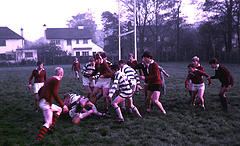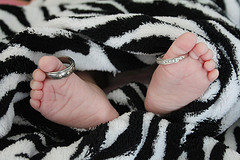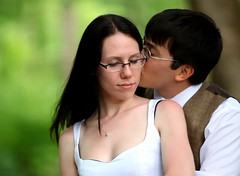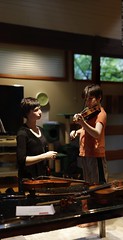 If you’re familiar with his previous books, Losing Ground and The Bell Curve: Intelligence and Class Structure in American Life, you won’t be surprised to learn that Charles Murray’s new book is ruffling more than a few scholarly feathers. An article in the Chronicle of Higher Education this week outlines the ruckus and a few sociologists weigh in.
If you’re familiar with his previous books, Losing Ground and The Bell Curve: Intelligence and Class Structure in American Life, you won’t be surprised to learn that Charles Murray’s new book is ruffling more than a few scholarly feathers. An article in the Chronicle of Higher Education this week outlines the ruckus and a few sociologists weigh in.
The Chronicle summarizes the book:
Mr. Murray’s newest book, Coming Apart: The State of White America, 1960-2010 (Crown Forum), makes a pretense of making nice. It bills itself as an attempt to alleviate divisiveness in American society by calling attention to a growing cultural gap between the wealthy and the working class.
Focused on white people in order to set aside considerations of race and ethnicity, it discusses trends, like the growing geographic concentration of the rich and steadily declining churchgoing rates among the poor, that social scientists of all ideological leanings have documented for decades. It espouses the virtues of apple-pie values like commitment to work and family.
But Mr. Murray, a Harvard and MIT-educated political scientist, seems wired like a South Boston bar brawler in his inability to resist the urge to provoke. In the midst of all of his talk about togetherness, he puts out there his belief that the economic problems of America’s working class are largely its own fault, stemming from factors like the presence of a lot of lazy men and morally loose women who have kids out of wedlock. Moreover, he argues, because of Americans’ growing tendency to pair up with the similarly educated, working-class children are increasingly genetically predisposed to be on the dim side.
(This is the point where heads turn, fists clench, and a hush is broken by the sound of liberal commenters muttering, “Oh no he didn’t.”)
Even Murray seems to know that his conclusions and brand of social scientific analysis and commentary may not sit well in academic circles:
“I am sure there are still sociology departments where people would cross themselves if I came into the room,” he said in an interview last week.
While some sociologists, such as Claude S. Fischer, think that Murray’s book will likely not get much play in scholarly circles, Dalton Conley notes that Murray is:
“probably the most influential social-policy thinker in America” thanks to his engaging writing style and his ability to make complex ideas accessible to wide audiences. “He is like the Carl Sagan of social policy,” Mr. Conley said, “but with an ideological slant.”
A flashpoint for many social scientists has long been Murray’s use of social scientific research, methods, and rhetoric. Conley explains how Murray’s use of social science may mislead readers on both theoretical and methodological grounds:
Although his descriptions of societal problems echo a lot of research performed by other scholars, he takes leaps in naming the causes or proposing solutions. Mr. Conley …said the idea that certain values, such as religiosity, lead to financial success “is a big, big assumption that outpaces the evidence,” because social scientists cannot conclusively prove such causal relationships without conducting randomized experiments on humans.
It is entirely possible, he said, that religiosity and financial success go hand in hand not because the former causes the latter, but because the latter causes the former, or both are the product of some other force not being considered.
Katherine Newman also adds:
Most social scientists continue to argue that it is economic hardship that leads to deterioration of working-class social conditions, not the other way around. “I don’t think there is any question that Americans in the working class, and those below the poverty line, have been hammered by the economic transformations that have robbed them of stable employment, and privileged those who are really well educated, giving them access to the only good jobs we have…”
In light of this disconnect, The Chronicle argues:
At the end of the day, the cultural and economic divide most illuminated by Coming Apart might be one found in scholarly publishing. On one side are authors and publishers who produce nuanced books that offer only conclusions stemming from research, and tend to be too esoteric for wide readership. On the other side are authors and publishers who cash in by producing best-selling polemics, in which research is used to buttress foregone conclusions.
Here at TSP, we’re trying to do something to bridge this very divide!










